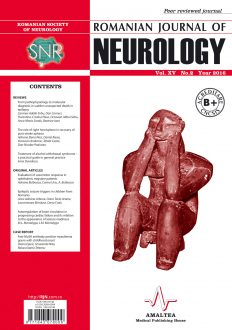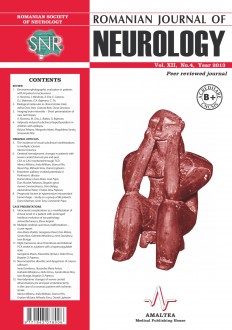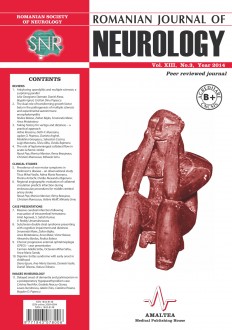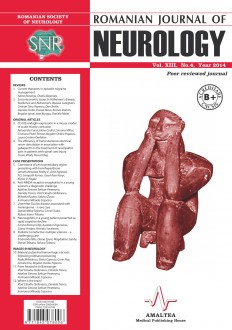SELECT ISSUE

Indexed

| |

|
|
|
| |
|
|
|

|
|
|
|
|
|
| |
|
|
HIGHLIGHTS
National Awards “Science and Research”
NEW! RJN has announced the annually National Award for "Science and Research" for the best scientific articles published throughout the year in the official journal.
Read the Recommendations for the Conduct, Reporting, Editing, and Publication of Scholarly work in Medical Journals.
The published medical research literature is a global public good. Medical journal editors have a social responsibility to promote global health by publishing, whenever possible, research that furthers health worldwide.
THE ROLE OF RIGHT HEMISPHERE IN RECOVERY OF POST-STROKE APHASIA
Adriana Elena Nica, Dan Nicolae Paduraru, Daniel Alexa, Octavian Andronic and Tabita Cazac
ABSTRACT
Previous data obtained especially from rTMS studies indicate that right hemisphere recruitment has a limiting effect on recovery of poststroke aphasia in right handed patients by inhibiting the activation of intact perilesional areas in left hemisphere and preventing them from regaining function. New researches bring new arguments to support the positive influence of right hemisphere on restoration of language and communication. In this paper we try to review the latest evidences regarding the contribution of the right hemisphere to post-stroke aphasia recovery.
Keywords: aphasia, right hemisphere, right temporoparietal regions
Full text | PDF



